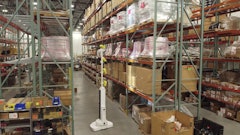
Takeaways:
- Work with CFO to document key requirements that are not being met or will not be met in the future.
- IT, finance and the lines of business should work together to review user benefits and ease of use.
- The benefits of change must always outweigh the pain of remaining the same.
Surprisingly, access to vital financial and performance data is still the Achilles’ heel of the logistics sector. Despite significant advancements in technology and its deployment, companies struggle to access management information on demand and to exert true financial control across operations. This is largely due to archaic, non-integrated finance, warehouse management and traffic management systems that require much-needed resources to maintain and support, even though they can’t deliver business performance data without a lot of manual intervention. Even then, the information is often doubted and usually too old or too late by the time it is checked. It’s not a good basis for making critical business decisions.
The inability to seamlessly integrate financial systems with specialized or custom-built operational systems such as freight and container management systems is all too common. Without integration, users have no real-time visibility into sources of revenue, expenses, supplier performance and statistical data. There are infinite ways to classify, measure and analyze profitability, including by shipment, vessel voyage, container and bill of lading. To remain competitive, logistics companies must leverage their data and the analyses that can be gleaned from it.
Logistics companies often have a dispersed organizational structure, which makes finance particularly central to smooth business operations. By reviewing and replacing systems from finance outward, financial transparency can be ensured across the entire business and work to optimize profitability and competitiveness. The right financial software can help deliver new standardized processes and total vision across the business.
Challenging issues to improve cost control and efficiency can be addressed a number of ways, such as:
- Automating existing systems and procedures.
- Replacing local processes and systems with standardized, centralized ones, for example, through a single global instance of the accounting system, which not only facilitates shared service centers or business process outsourcing, but also supports multiple locations, countries, currencies, languages and operating companies.
- Improving management information, such as being able to determine profitability by trip, voyage, passage or lines of business in order to allocate resources for maximum benefit.
- Achieving greater integration, including how a business can overcome the islands of information created by separate operational systems to deliver essential integration with financial information.
- Coping with the changing global business environment, for example, ways businesses can reduce the risks and maximize the opportunities of doing business globally and address challenges such as currency, language, localization and technology.
Selecting a new finance system is a complex task. Start by working with your CFO to document key requirements that are not being met or will not be met in the future. Assess whether each requirement has a financial value and if so, what that value is.
Typical requirements include access to useful management information and reporting data. Can you perform analytics and performance reviews in a way that benefits the organization? Another key consideration is efficiency. How quickly can you produce bank reconciliations, annual budgets and month-end reports? How easily can you upgrade or enhance your current application and how reliable is it?
IT, finance and the lines of business should work together to review user benefits and ease of use. Systems should:
- Support the successful execution of the organization’s business strategies.
- Enable the finance function, fulfilling a more strategic role within the organization.
- Support a move to shared services or business process outsourcing if that is a consideration for the future.
- Be able to scale or adapt to mergers and/or acquisitions.
It’s a good idea to produce a cost justification worksheet listing each business issue associated with a shortfall in the current system and the areas it impacts. Estimate the current annual costs associated with this business issue and then estimate the potential savings or benefits derived from replacing your current application. Costs can be calculated by estimating employee time and expense needed to work around the issue, or the expense of external resources to solve the problem. The benefits of change must always outweigh the pain of remaining the same. Not all issues have an easily quantifiable financial value, although the impact of continuing with an inadequate financial application is likely to be significant.
The scope and impact of an organization’s core financial system is likely to be greater than ever. For example, many organizations now need to allow secure, controlled access to non-financial line managers and other remote users.
Through the right, integrated finance system, many organizations are able to inject discipline into the business. Companies can implement the correct purchase order procedure, for example, and measure supplier performance against order fulfilment and invoice accuracy to make quicker, more informed decisions. Often, a significant business requirement is to empower managers to be responsible for the performance of their area of the business. When they can access performance data in real time, they can make the right decisions at the right time to make a significant difference in operational profits as a whole.
When it comes to data visibility and reporting requirements, organizations should be able to quickly track individual vehicle profits and reconcile revenue on distribution. Asset and lease management is also vital for effective control and planning. Being able to see when a piece of equipment is nearing the end of its life, for example, means effective planning and time to consider the best replacements. In general, your staff will be a lot happier when there is less fire fighting and more time to spend on business analysis and future planning.
Lessons from a world-class logistics company
A worldwide logistics company, which trades in multiple countries through multiple subsidiaries, recognized that it needed to unify its financial systems to gain a global, consolidated view of its finance reports.
Previously, each of the company’s subsidiaries used different accounting systems, which made consolidating financial reports very time-consuming and costly. It was nearly impossible to achieve transparency, detailed information and real-time analysis.
The company decided to implement a flexible financial accounting solution that would provide one unified view into financials organization-wide and accommodate the different requirements of its subsidiaries. The new solution was able to easily adjust to local taxation requirements and enabled each subsidiary company to set up its own chart of accounts and cost accounting methods.
The company’s unified approach to reporting has been very beneficial. Now all invoices are accounted for on a worldwide basis, and monthly profit and loss accounting from subsidiaries is shown in one currency, alongside the local currencies. Reports can also be viewed at a detailed level so management has a real-time view of business performance.
Uniform reporting permits analysis which had not been previously possible. Now, financial controllers are able to focus on the future instead of the consolidation of historical data.
By having access to up-to-date consolidated data globally and an increased level of detail, the logistics firm has gained transparency. The team can spot anomalies quicker, so the business can take appropriate and immediate action. As a result, the new finance solution provides peace of mind and improves business-wide risk management.
In today’s fast-paced, changing business environment, it’s critical for logistics and transportation companies to have real-time transparency into their finances. It will not only enable them to cut costs and increase efficiency, but it will also allow them to gain financial control throughout their operations. More importantly, it gives them the competitive advantage of being able to easily identify areas of risk and quickly adapt to changing market conditions.
About the Author: Steve Pugh is CEO of UNIT4 CODA, Inc. in North America, a specialist in best-of-class financial management software. www.unit4coda.com.



















